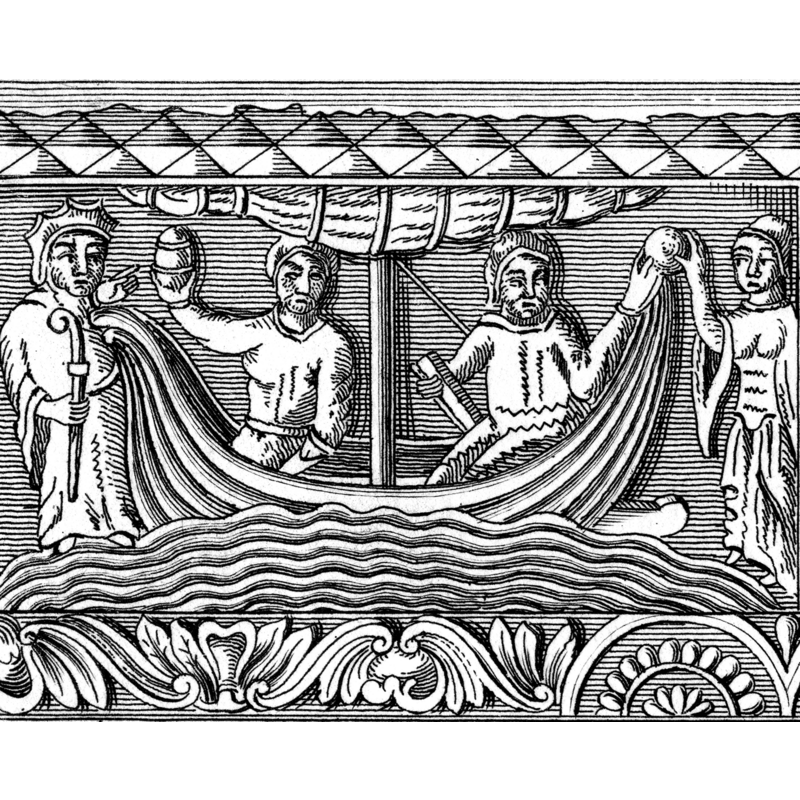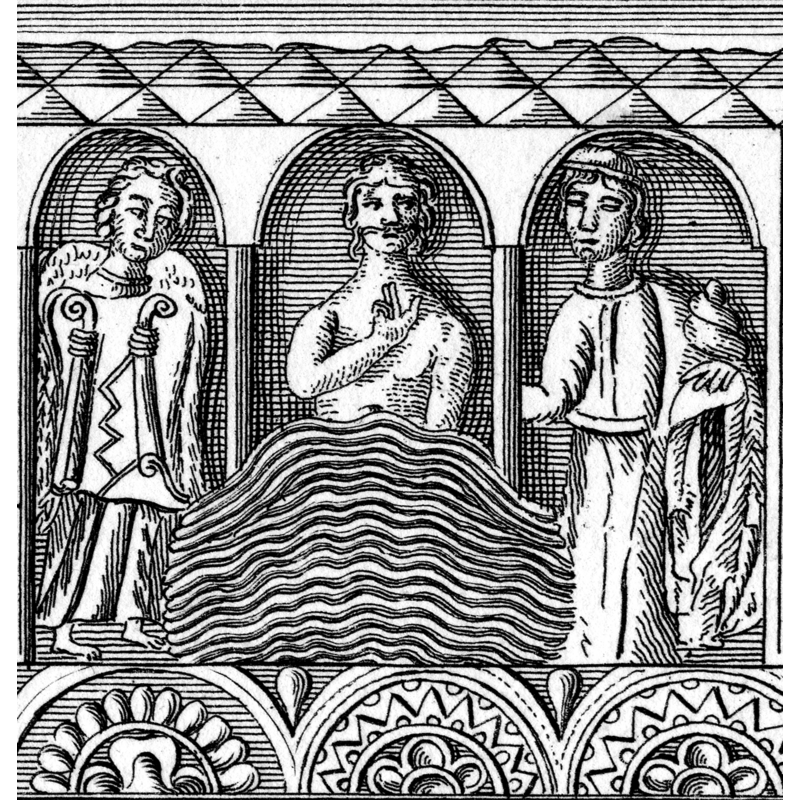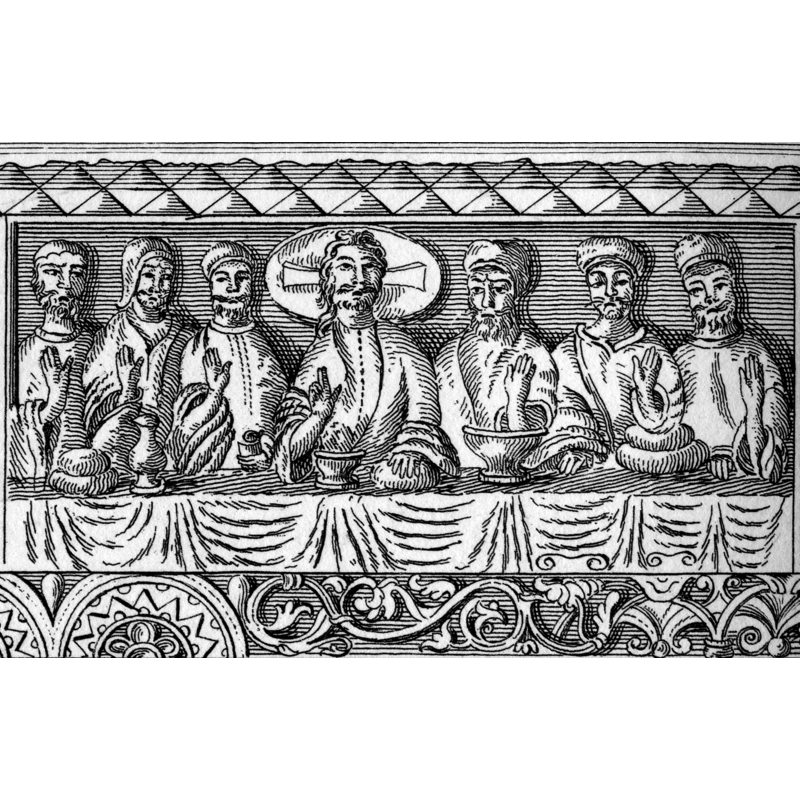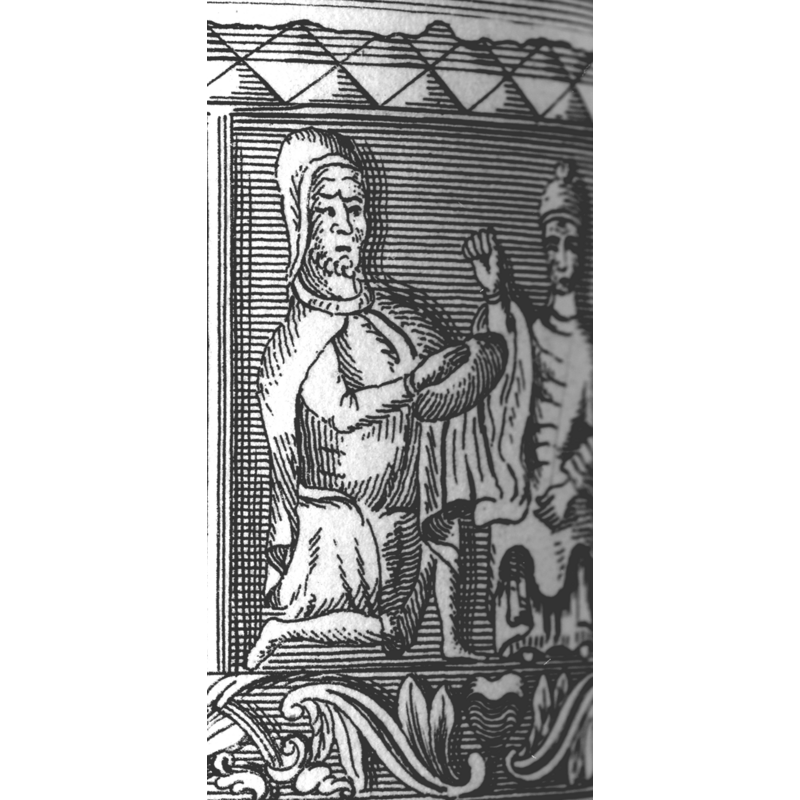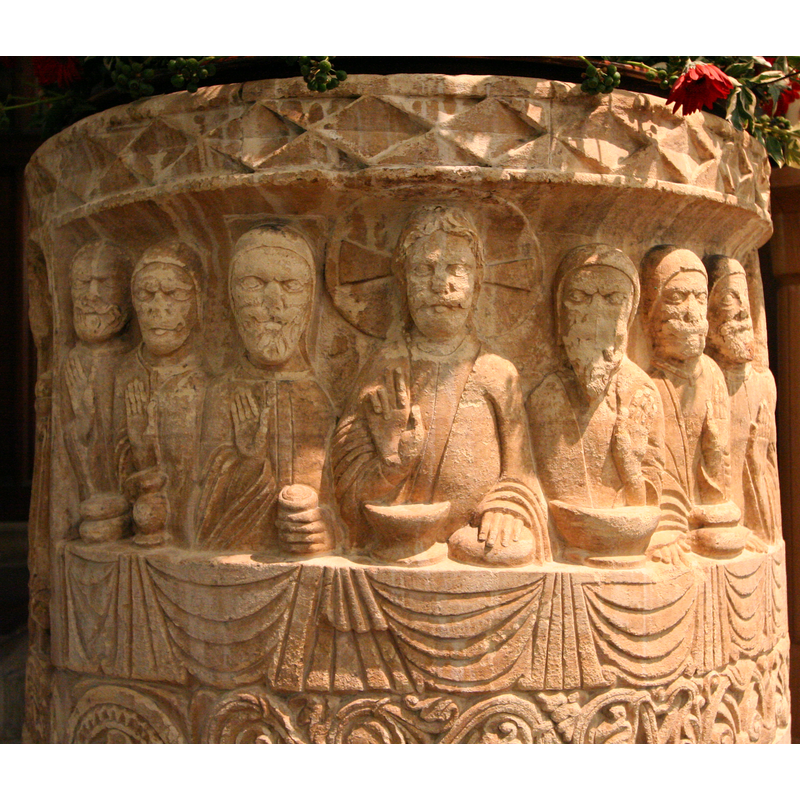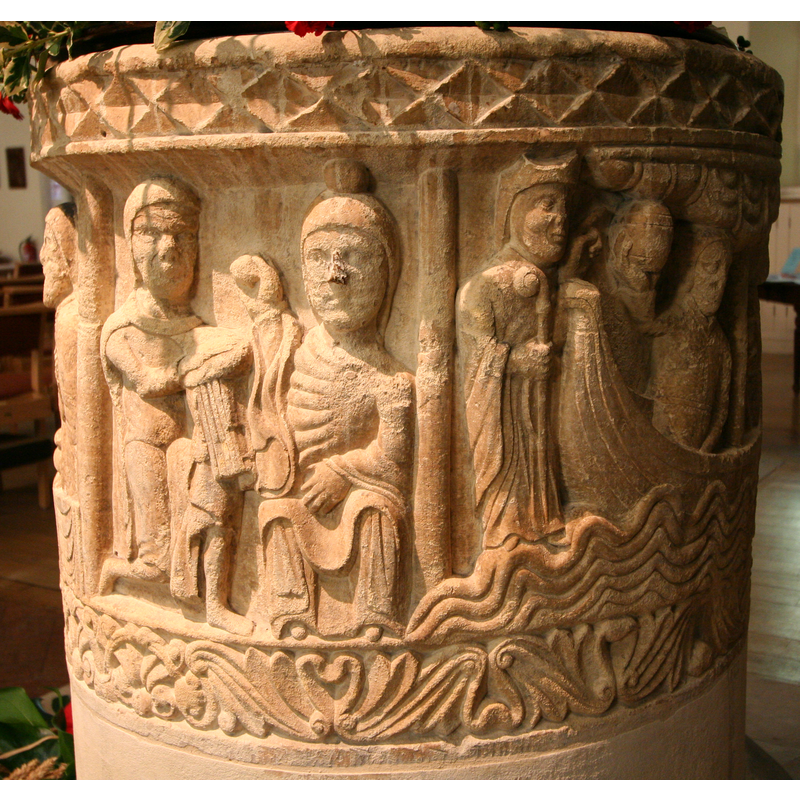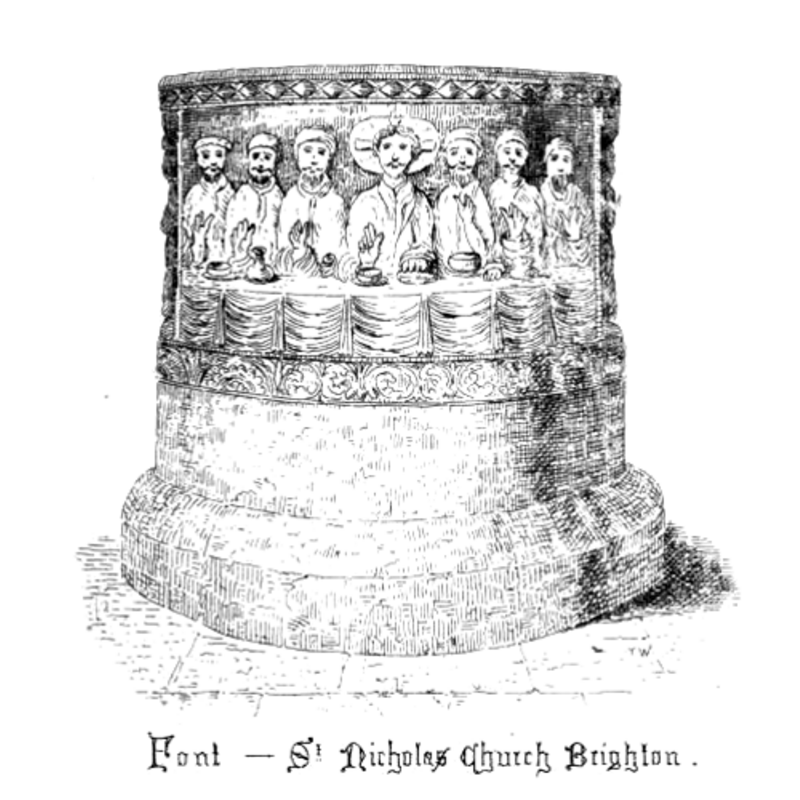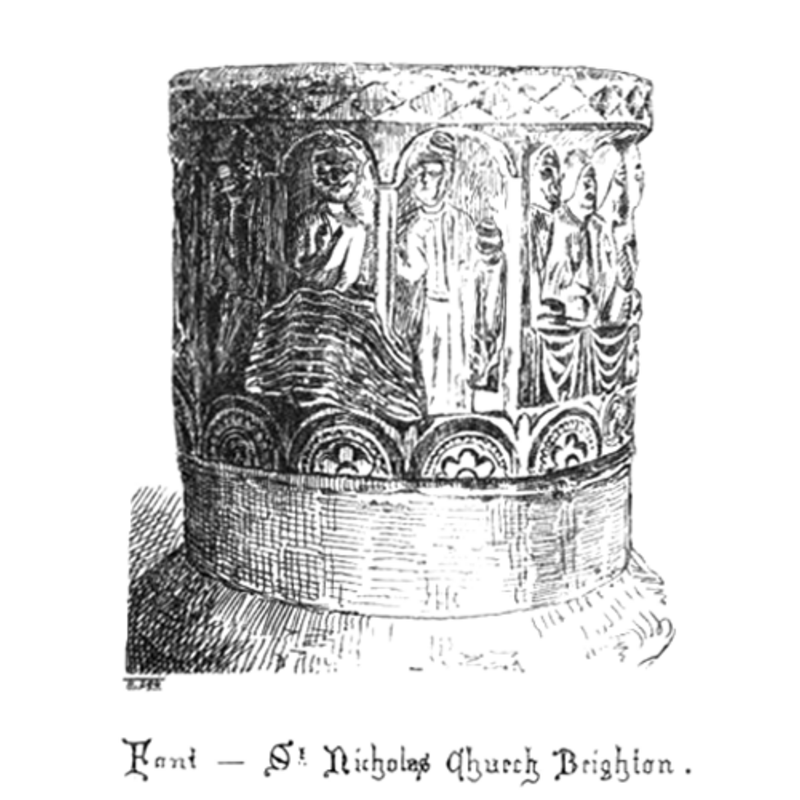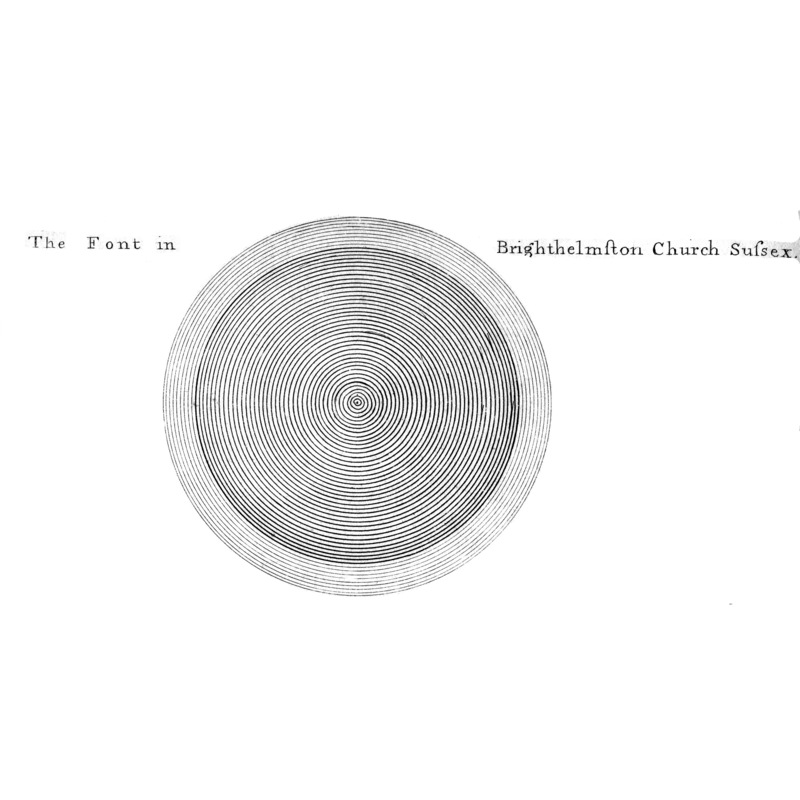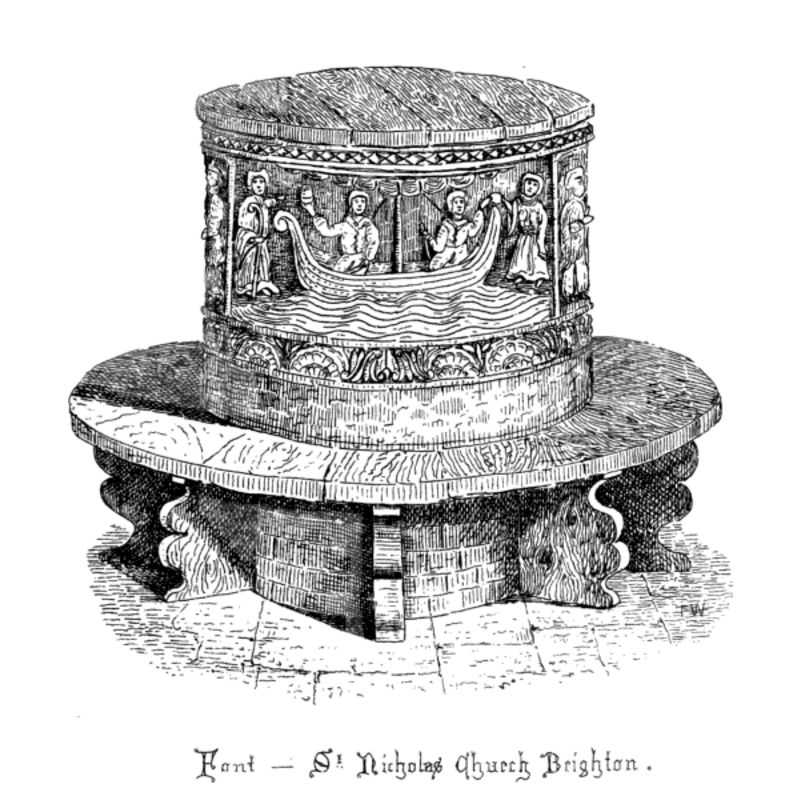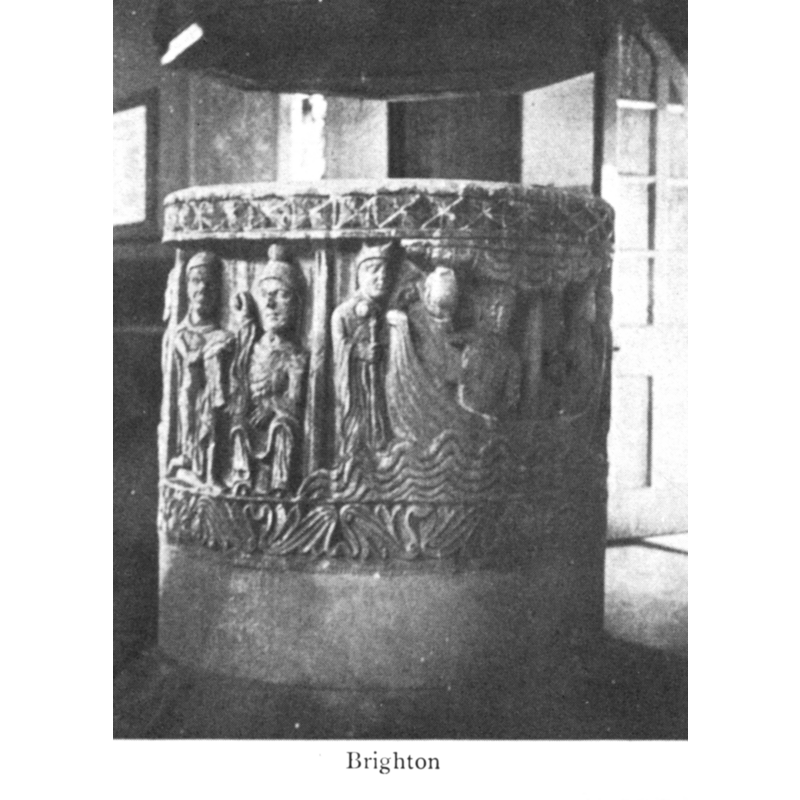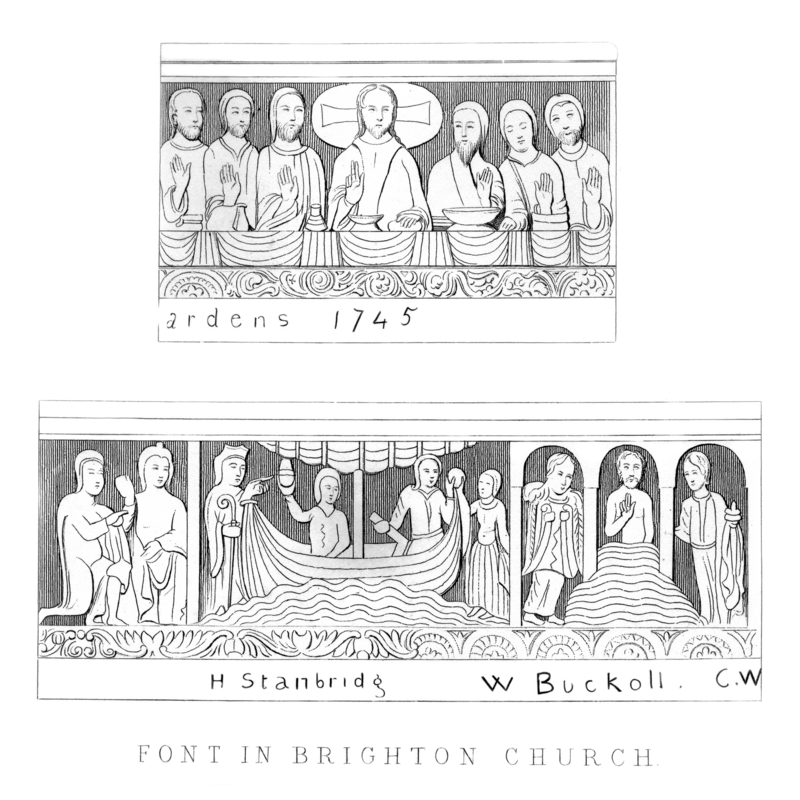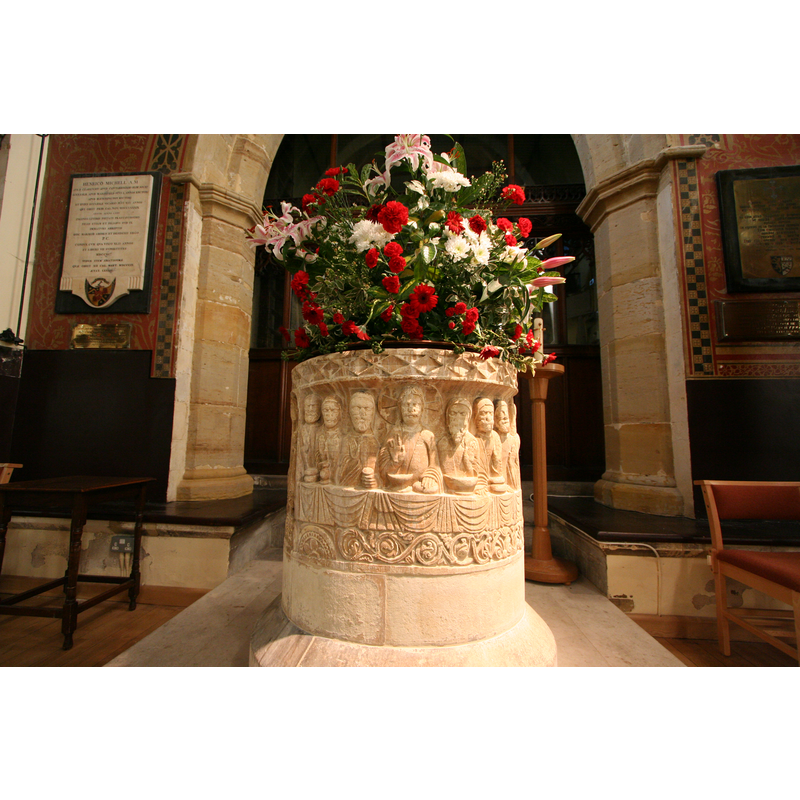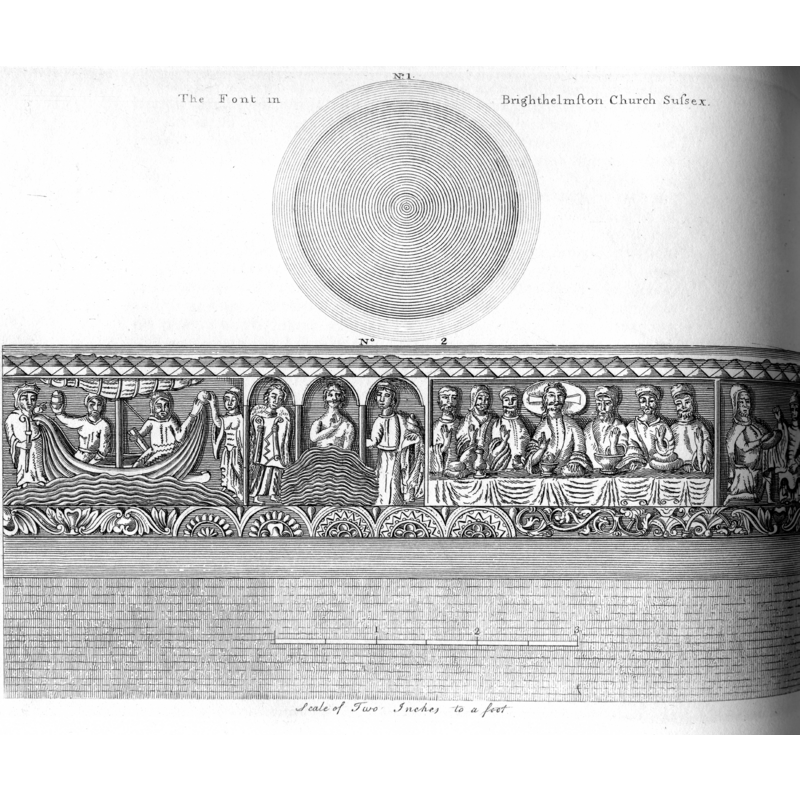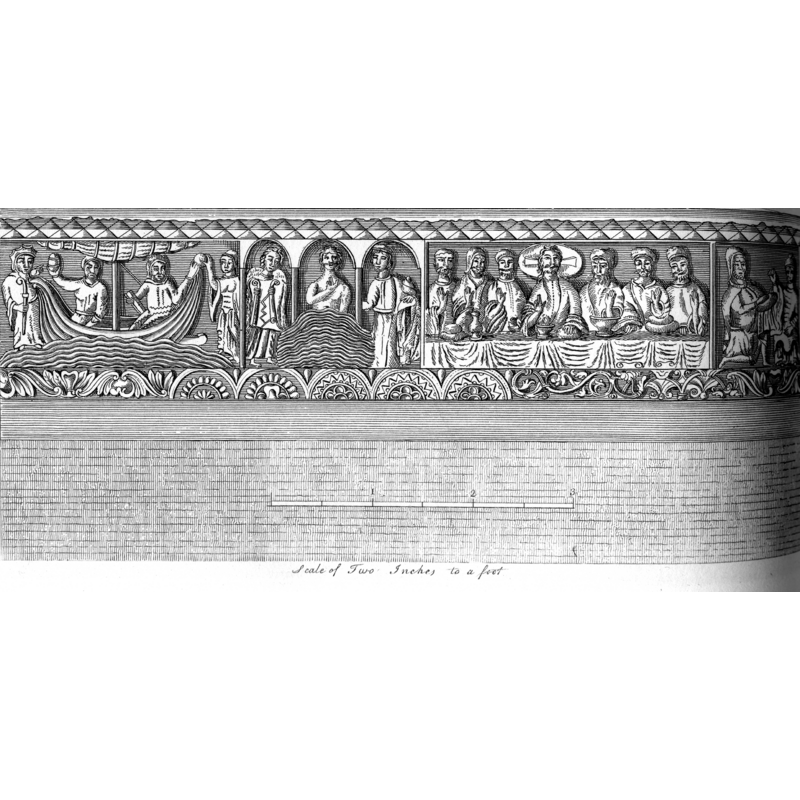Brighton / Bristelmestune / Brighthelmeston / Brighthelmestone / Brighthelmstone / Brighthelmston

Image copyright © Baptisteria Sacra Index, 2023
Results: 30 records
B01: New Testament - public life of Christ - baptism of Christ
Scene Description: on the south side of the basin -- scene contained in an arcade: Christ in the centre, John to the right, and the angel to the left. Notice Christ's likeness: short 'imperial' beard, as pointed out in Tyrrell-Green (1928)
Copyright Statement: Image copyright © Baptisteria Sacra Index, 2023
Image Source: BSI - Photographed July 1998
B02: New Testament - Passion of Christ - Last Supper
B03: Apostle or saint - St. Nicholas - story of the Devil desguised as a woman on a ship of pilgrims
Scene Description: on the west side of the basin -- the devil, disguised as religious woman appears to a shipload of pilgrims offering one of the sailors a box supposed to contain Holy Oil but which is in reality oil intended for the destruction of the Church. Bishop Nicholas appears, confusing the devil and orders the sailor to cast the oil into the sea where it promptly catches fire
Copyright Statement: Image copyright © Baptisteria Sacra Index, 2023
Image Source: BSI - Photographed July 1998
B04: Apostle or saint - St. Nicholas - story of the innkeeper of Myra
Scene Description: on the north side of the basin - legend of the innkeeper of Myra confessing to the murder of three boys [NB: Hannah (1886) notes that this scene "may possibly represent the ordinance of marriage"]
Copyright Statement: Image copyright © Baptisteria Sacra Index, 2023
Image Source: BSI - Photographed July 1998
BBL01: design element - motifs - foliage
BBL02: design element - motifs - floral - flower
BBU01: design element - patterns - diaper
view of basin - detail
view of basin - detail
view of basin - detail
view of basin - detail
view of basin - detail
Scene Description: photograph taken in Novenber 2007, after the renovations inside the temple and the cleaning of the font
Copyright Statement: Image copyright © Holly Hayes, 2009
Image Source: detail of a digital photograph taken 14 November 2007 by Holly Hayes, Sacred Destinations [www.sacred-destinations.com]
Copyright Instructions: Standing permission
view of basin - detail
Scene Description: photograph taken in Novenber 2007, after the renovations inside the temple and the cleaning of the font
Copyright Statement: Image copyright © Holly Hayes, 2009
Image Source: detail of a digital photograph taken 14 November 2007 by Holly Hayes, Sacred Destinations [www.sacred-destinations.com]
Copyright Instructions: Standing permission
view of basin - detail
Scene Description: photograph taken in Novenber 2007, after the renovations inside the temple and the cleaning of the font
Copyright Statement: Image copyright © Holly Hayes, 2009
Image Source: detail of a digital photograph taken 14 November 2007 by Holly Hayes, Sacred Destinations [www.sacred-destinations.com]
Copyright Instructions: Standing permission
view of basin - detail
view of basin - east side
view of basin - north side
view of basin - south side
view of basin - south side
view of basin - upper view
view of basin - west side
view of font
view of font
view of font - north, east and west sides
view of font - projection
view of font and cover
view of font and cover in context
Scene Description: photograph taken in Novenber 2007, after the renovations inside the temple and the cleaning of the font
Copyright Statement: Image copyright © Holly Hayes, 2009
Image Source: digital photograph taken 14 November 2007 by Holly Hayes, Sacred Destinations [www.sacred-destinations.com]
Copyright Instructions: Standing permission
view of font and iconographic program
view of iconographic program
INFORMATION
FontID: 00192BRI
Object Type: Baptismal Font1
Church/Chapel: Parish Church of St. Nicholas
Church Patron Saints: St. Nicholas of Myra
Church Location: Dyke Road, Brighton, East Sussex BN1 3LJ
Country Name: England
Location: East Sussex, South East
Directions to Site: Located at Dyke Rd. and Church Rd.,
Ecclesiastic Region: Diocese of Chichester
Historical Region: Borough of Brighton -- Rape of Lewes -- Sussex
Font Location in Church: Inside the church, in the SW side of the nave, just to the left of the S door. Until its restoration 1853 the font had stood in the extreme western end
Date: ca. 1170 [altered]
Century and Period: 12th century (late?) [altered], Medieval [altered]
Cognate Fonts: The font at Winchester Cathedral includes another legend related to St. Nicholas of Myra
Credit and Acknowledgements: We are grateful to Holly Hayes, of Sacred Destinations [www.sacred-destinations.com] for her photographs of this font taken in November 2007, after the renovation of the church interior and the cleaning of the font
Church Notes: St. Nicholas is the only medieval church in Brighton proper. Most of its other churches are 19thC, except the Chapel Royal late 18thC) and St. Winifred (20thC)
Font Notes:
Click to view
Noted in Gough (1792) as a baptismal font "somewhat similar in shape" to the one at Hempsted, Gloucestershire. The Antiquarian Repertory (1807-1809), which provides an engraving of the iconographic program on the font sides, notes: "The font here delineated is undoubtedly of great antiquity, the figures and ship, in stile, greatly resembling those on the font at the Cathedral at Winchester, universally allowed to be of Saxon workmanship." [NB: as with the font of Winchester, the author is way off the mark on the origin and the date of the font, and fails to identify the scene related to the legend of St. Nicholas of Myra]. Described and illustrated in Rouse (1825), who notes: "This Font is said to have been brought to England by William the Conqueror; and a singular evidence in favour of this opinion is, that part of the border surrounding it, is the same pattern as that on Gundred's tomb". Described and illustrated in Hussey (1862): "The font is curious on account of the carving round it, but has suffered from the craving after immortality of some former churchwardens" [NB: Hussey refers to the engraving added to the font in 1745 with the names of H. Stanbridg and W. Buckoll, the two churchwardens who had their thirst for immortality forced upon the stone of the font -- the inscription was later removed, but Hussey's illustration of the font from ca. 1852 still shows it for posterity]. Described and illustrated in Hannah (1886), Vicar of Brighton, in a paper read to the The British Archaeological Society on 19 August 1885, with reference to Simpson [cf. supra]. Hannah (ibid.) offers the suggestion that the scene on the north side of the basin, elsewhere identified as the story of the inn-keeper in the legend of St. Nicholas of Myra, "may possibly represent the ordinance of marriage". Described in Cox & Harvey (1907) as "a remarkable fine example" of the tub-shaped baptismal fonts of the Norman period in this county. Scenes on the basin sides of this font include a Lord's Supper showing only six Apostles; Christ wears a cruciferous nimbus and has moustache and beard; His left hand is on the loaf, the right hand blesses the cup; the Apostles wear cowls, have moustaches and four have beards; the legend of St. Nicholas follows with goddess Diana, dressed as a nun, is seen in the ship holding high up the vase of the fiery oil; next is the scene of the Baptism of Christ (Bond, 1908) and (Cox&Harvey, 1907). Until the restoration of the Church in 1853, the font had a circular bench around it providing additional seating in the church. Pevsner describes it as "the best piece of Norman carving in Sussex" (in Whiteman, 1998). Tyrrell-Green (1928) points out the "Our Lord's features differ from the conventional likeness in that He has no full beard, but a bare chin with a small beard of the 'imperial' type. He is depicted in the act of consecration, the left hand resting upon a flat loaf on the table, and the right hand raised over a chalice in the act of benediction". The Victoria County History (Sussex, vol. 7, 1940) notes: "A church is mentioned in 1086, when it belonged to the manor held by William de Wateville [...] The font is of exceptional interest. [...] It is of tub form, in Caen stone, and is obviously of foreign origin. It is apparently of early-12th-century date, and is covered with sculpture arranged in three bands. The upper and lower of these are narrow strips of conventional ornament, but the wide central section has figure sculpture, in markedly Byzantine style, arranged in four panels. Two of these represent the Baptism of Christ and the Last Supper, a third is a maritime adventure of St. Nicholas, and the fourth may also be an unidentified incident in the life of this saint. The sculpture was partly recut in 1745 at the instigation of two churchwardens, whose names, cut, with the date, into the base of the font, have since been erased." In Stone (1955 with date ca. 1150-1160. Described and ilustrated in Künstler (1973). On-site notes: this font is carved from a solid block of what appears to be Caen stone, the inner well of the basin lined with lead, and with a central drain. There are four scenes on the font, moving from left to right: Baptism of Christ, The Last Supper and two scenes from the legend of St. Nicolas. Described and illustrated in The Corpus of Romanesque Sculpture in Britain and Ireland [www.crsbi.ac.uk/ed/sx/brigh/index.htm] where it is noted that "the font was partly recut in 1745 at the instigation of two churchwardens whose names were cut into the base of the tub, together with the date. That inscription has since been removed" [cf. Hussey supra]. The CRSBI entry (ibid.) states that the font's "highly distinctive style is diffficult to parellel elsewhere", which has given base to all kind of speculations about its origin, and suggests that "an identification of the stone from which this font is carved may help determine its provenance" [NB: this is probably the original font -mentioned in Carte (1792) from the medieval town of Brighthelmstone burnt by French pirates in 1533; the church of St. Nicholas survived]
COORDINATES
Church Latitude & Longitude Decimal: 50.825358, -0.144853
Church Latitude & Longitude DMS: 50° 49′ 31.29″ N, 0° 8′ 41.47″ W
UTM: 30U 701079 5634290
MEDIUM AND MEASUREMENTS
Material: stone, Caen stone?
Number of Pieces: one
Font Shape: tub-shaped
Basin Interior Shape: round
Basin Exterior Shape: round
Drainage Notes: lead lined basin well
Rim Thickness: 11-13 cm
Diameter (inside rim): 56 cm *[57 cm]
Diameter (includes rim): 81-82 cm
Basin Depth: 33 cm
Height of Basin Side: 61.5 cm *[60 cm]
Height of Base: 44 cm (2-parts)
Font Height (less Plinth): 105 cm
Font Height (with Plinth): 15 cm (single step) 120 cm *[118 cm]
Notes on Measurements: BSI on-site -- *[CRSBI (2008)]
INSCRIPTION
Inscription Language: English
Inscription Notes: the inscription, added ca. 1745, was erased sometime after 1852
Inscription Location: was around the lower side of the basin
Inscription Text: "H Stanbridg W Bucknoll. C.Wardens 1745"
Inscription Source: Hussey (1852)
LID INFORMATION
Date: 19th century / Victorian
Material: wood, oak?
Apparatus: yes; pulley
Notes: lower part is octagonal with vertical sides; upper part is an octagonal pyramid; all of it profusely carved and ornamented
REFERENCES
Antiquarian repertory: a miscellaneous assemblage of topography, history, biography, customs, and manners, intended to illustrate and preserve sevral valuable remains of old times, London: Printed and published for E. Jeffery, 1807-1809
Romanesque Art in Europe, New York: W.W. Norton & Co., 1973
Victoria County History [online], University of London, 1993-. Accessed: 2012-12-06 00:00:00. URL: https://www.british-history.ac.uk.
Bond, Francis, Fonts and Font Covers, London: Waterstone, 1985 c1908
Carte, Samuel, "Three letters from Mr. Samuel Carte to Dr. Ducarel, and one to Sir Thomas Cave, concerning fonts [or, Mr. Carte's Observations on ancient fonts]", X, Archaeologia, 1792, pp. 208-225; p. 207
Clapham, Alfred William, English Romanesque Architecture after the Conquest, Oxford: Clarendon Press, 1934
Corpus of Romanesque Sculpture in Britain and Ireland, The Corpus of Romanesque Sculpture in Britain and Ireland, The Corpus of Romanesque Sculpture in Britain and Ireland. Accessed: 2006-07-19 00:00:00. URL: http://www.crsbi.ac.uk.
Cox, John Charles, English Church Furniture, New York: E.P. Dutton & Co., 1907
Crossley, Frederick Herbert, English Church Craftsmanship: an Introduction to the Work of the Mediaval Period and Some Account of Later Developments, London: B.T. Batsford, 1941
Davies, J.G., The Architectural Setting of Baptism, London: Barrie and Rockliff, 1962
Gough, Richard, "Description of the old font in the Church of East Meon, Hampshire, 1789: with some observations on fonts", X, Archaeologia, 1792, pp. 183-209; p. 188, 209
Hannah, D. D. [Vicar of Brighton], "On the Church of St. Nicholas and its ancient font, with illustrations from other fonts of similar antiquity", XLII, Journal of the British Archaeological Association, 1886, pp. 26-34; p. 26-31, 34 and plates
Harrison, Frederick, Notes on Sussex churches, Hove: Combridges, 1920
Hussey, Arthur, Notes on the churches in the counties of Kent, Sussex, and Surrey mentioned in Domesday Book and those of more recent date [...], London: John Russell Smith, 1852
Rouse, James, The Beauties and antiquities of the County of Sussex: forming a general illustration on one hundred and forty-nine spirited views from original drawings […], London: J.F. Setchel, 1825
Stone, Lawrence, Sculpture in Britain: the Middle Ages, Harmondsworth: Penguin Books, 1955
Tyrrell-Green, E., Baptismal Fonts Classified and Illustrated, London: Society for Promoting Christian Knowledge: The Macmillan Co., 1928
Whiteman, Ken, Ancient Churches of Suffolk, Seaford, East Sussex: S.B. Publications, 1998



![on the north side of the basin - legend of the innkeeper of Myra confessing to the murder of three boys [NB: Hannah (1886) notes that this scene "may possibly represent the ordinance of marriage"]](/static-50478a99ec6f36a15d6234548c59f63da52304e5/compressed/BRI9801721_compressed.png)
